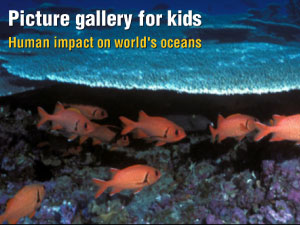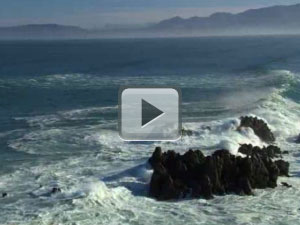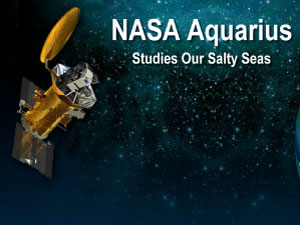Education: The Effects of Density-Driven Circulation on Climate
| Aquarius Studies Our Salty Seas Test your knowledge of the salty satellite! * |
 |
 |
| * JavaScript disabled? Click here to access this quiz without JavaScript |
How Does Density-Driven Circulation Affect Climate (and Vice Versa)?
Carbon is the basic building block of life, and its compounds form solids, liquids, or gases. Carbon helps form the bodies of living
organisms; it dissolves in the ocean; mixes in the atmosphere; and can be stored in the crust of the planet. A carbon atom could
spend millions of years moving through this complex cycle. The ocean plays the most critical role in regulating Earth's carbon
balance, and understanding how the carbon cycle is changing is key to understanding Earth's changing climate. Excess heat associated
with the increase in global temperature during the last century is being absorbed and moved by the ocean. Surface ocean and atmospheric
temperature changes may cause evaporation to intensify and, as a result, significantly alter sea surface salinity and ocean circulation
patterns. Featured Movie: Keeping Up With Carbon
Hands-On Activities
- Convection
- Effects of Temperature & Salinity on Density & Stratification (Steps 1-4)
- Effects of Temperature & Salinity on Density & Stratification (Steps 5-7)
- Exploring Polar Oceanography: Ocean Currents and Climate Connections
- Ocean Currents and Sea Surface Temperature
Online Activities
- Annual Mean Data
- Changes in Annual Mean Data
- Ocean Motion: Ocean Surface Currents
- Changes in Monthly Mean Data
Movies
- Density Effects
- Sea Surface Density
- Sea Surface Salinity
- The Carbon Cycle
- Thermohaline Circulation - The Great Ocean Conveyor Belt
- Thermohaline Circulation Using Improved Flow Field
Podcasts
Articles & Documents
- Evolution of North Atlantic Water Masses Inferred from Labrador Sea Salinity Series
- If Rain Falls on the Ocean - Does It Make a Sound?



